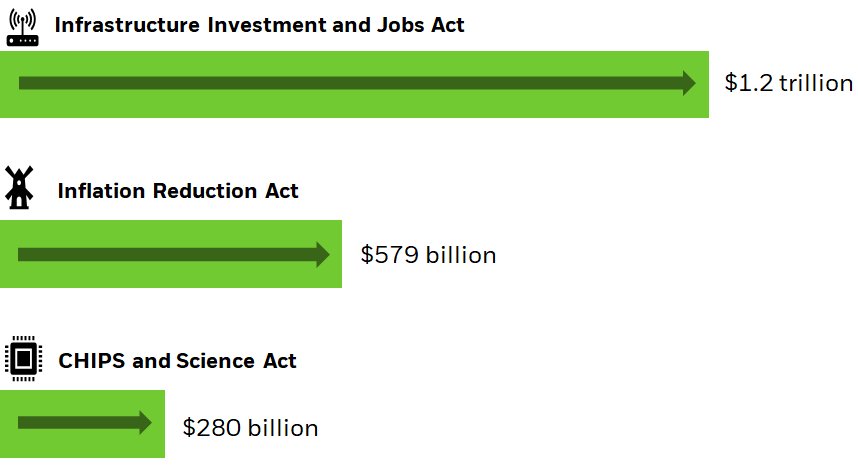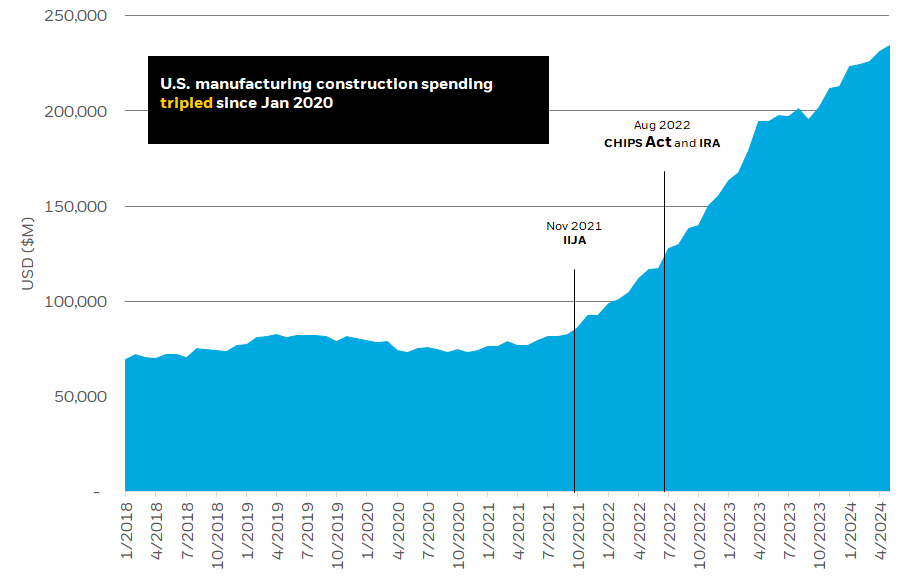Hi, this is Tony DeSpirito, Global CIO of Fundamental Equities, and I want to tell you about one of the investment themes that I'm most excited about for the second half of 2024. And that's the theme of reshoring.
So, what is reshoring? Reshoring is basically bringing production back to the end market, where the sales occur. So, in the case of the United States, it's about bringing production back to the U.S. and to our NAFTA partners in Canada and Mexico. And this is going to impact a wide swath of industries. It's going to impact semiconductors, where companies are building new chip plants in the United States to take advantage of the Chips act. It's going to affect industries such as autos, where companies are moving production back to the U.S. and Mexico, particularly with respect to electric vehicles. And it's even impacting an industry like health care, where there were shortages of certain generic drugs during Covid 19.
When you think about reshoring, it's really about reducing risk. It's about building resilience in your supply chain. It's about reducing the risk of supply shortages. It's about reducing the risk of tariffs. It's about reducing political risks, etc. And so, we're particularly excited about being able to implement on this strategy in an active way. So, we can take advantage of whatever price movements and supply and demand movements happen as this economic change occurs.
Thanks for listening.
Disclosures:
Past performance does not guarantee future results.
Carefully consider the Funds' investment objectives, risk factors, and charges and expenses before investing. This and other information can be found in the Funds' prospectuses or, if available, the summary prospectuses which may be obtained by visiting www.iShares.com or www.blackrock.com. Read the prospectus carefully before investing.
Investing involves risk, including possible loss of principal.
This material is not intended to be relied upon as a forecast, research or investment advice, and is not a recommendation, offer or solicitation to buy or sell any securities or to adopt any investment strategy. The opinions expressed are as of the date indicated and may change as subsequent conditions vary. The information and opinions contained in this material are derived from proprietary and nonproprietary sources deemed by BlackRock to be reliable, are not necessarily all-inclusive and are not guaranteed as to accuracy. As such, no warranty of accuracy or reliability is given and no responsibility arising in any other way for errors and omissions (including responsibility to any person by reason of negligence) is accepted by BlackRock, its officers, employees or agents. This material may contain “forward-looking” information that is not purely historical in nature. Such information may include, among other things, projections and forecasts. There is no guarantee that any of these views will come to pass. Reliance upon information in this material is at the sole discretion of the viewer.
Commodities' prices may be highly volatile. Prices may be affected by various economic, financial, social and political factors, which may be unpredictable and may have a significant impact on the prices of precious metals.
This material contains general information only and does not take into account an individual's financial circumstances. This information should not be relied upon as a primary basis for an investment decision. Rather, an assessment should be made as to whether the information is appropriate in individual circumstances and consideration should be given to talking to a financial professional before making an investment decision.
Prepared by BlackRock Investments, LLC, member FINRA.
©2024 BlackRock, Inc. All rights reserved. iSHARES and BLACKROCK are trademarks of BlackRock, Inc., or its subsidiaries in the United States. All other trademarks are the property of their respective owners.
ICRMH0724U/S-3676314



